Winter Transforms our Games
- Natalia Kokotou
- Dec 17, 2016
- 3 min read

The very nature of the outdoor classroom is that it is constantly transforming. As the world around us changes and adapts to seasonal needs, so do we adapt our space and habits accordingly.
This month, as we were met by frosty mornings and chilly winds, we dug a fire pit in the middle of the vegetable garden.
Other than the obvious benefit of keeping us warm, there are numerous lessons for young children to learn from building a fire.
We begin by collecting the wood, there is plenty of it lying around, but of course, what we find in the morning is damp from dew or rain, so we soon realise that we need to build up a store of wood for the winter. The children are beginning to get the idea of collecting the damp wood and putting it aside in the storeroom to dry. The next time they come, it is ready to use and they continue to build their store to ensure a supply throughout winter. This involves planning ahead and gives a sense of accomplishment and gratification when the wood is ready to use. It also teaches them the idea of saving; like squirrels building up a supply for the cold days ahead.
The children help build the fire with different sized wood, placing the kindling below and building up with larger pieces. We talk about leaving enough space for air to get through, as the fire needs oxygen to burn.
The children stand back, while an adult lights the fire. As the blaze gets going, it is time to huddle up and enjoy a story by the heat.
Today we are using the fire to roast chestnuts that we brought with us and potatoes that we collected in the morning.
The morning was spent in the potato patch, digging for potatoes and worms, with equal excitement as a hand went in and came up with one or the other. We observed the potato tubers as we pulled the plants out of the ground and separated the seed from the crop. We filled our basket, ready for the mid-morning picnic.
As we linger round the fire, there is plenty of time for observation. We point out a few cabbage leaves that have been nibbled to a thread, looking strangely beautiful and lace-like. We search for the culprits and find scores of caterpillars clinging to the plants. Some we gather and feed to the chickens as a tasty snack, but a few we collect in a glass jar so we can watch them transform over the next few weeks.
As the day draws on and there are other activities awaiting the children at the hut, the time comes to leave the fire-site; and at this point, perhaps the most important lesson of all: “putting out” the fire. We spread out the remaining logs and fill a bucket with water. The watering cans that have been lying redundant for weeks are reinstated as fire extinguishers and the children run back and forth with exclamations such as “I’m a fireman”, making sure every last spark is out.
We then gather to make our way up the forest path and back to the hut by the ponds.
The tables have been set up for some baking: flour and water to make dough, plenty of cinnamon, Christmas cookie cutters and paints will be used to make decorations, exciting all the senses.
A thread has been pinned up on the wall of the hut in the shape of a Christmas tree, setting up a frame for the children to build on. Throughout the month, a little weaving here, a few decorations pegged there, has resulted in a patchwork of games, built up effortlessly by all the children passing through and leaving their mark on the wall.




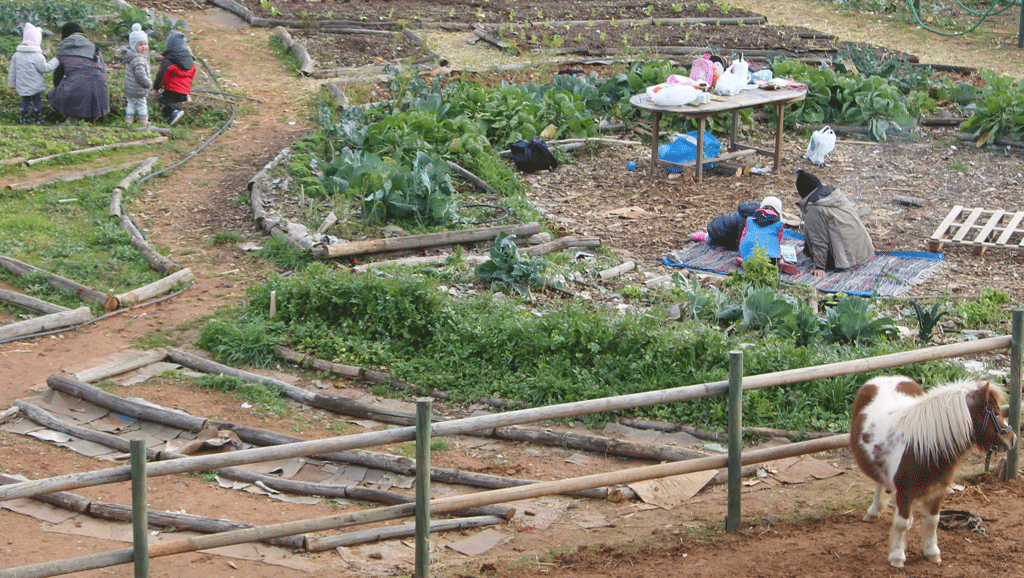
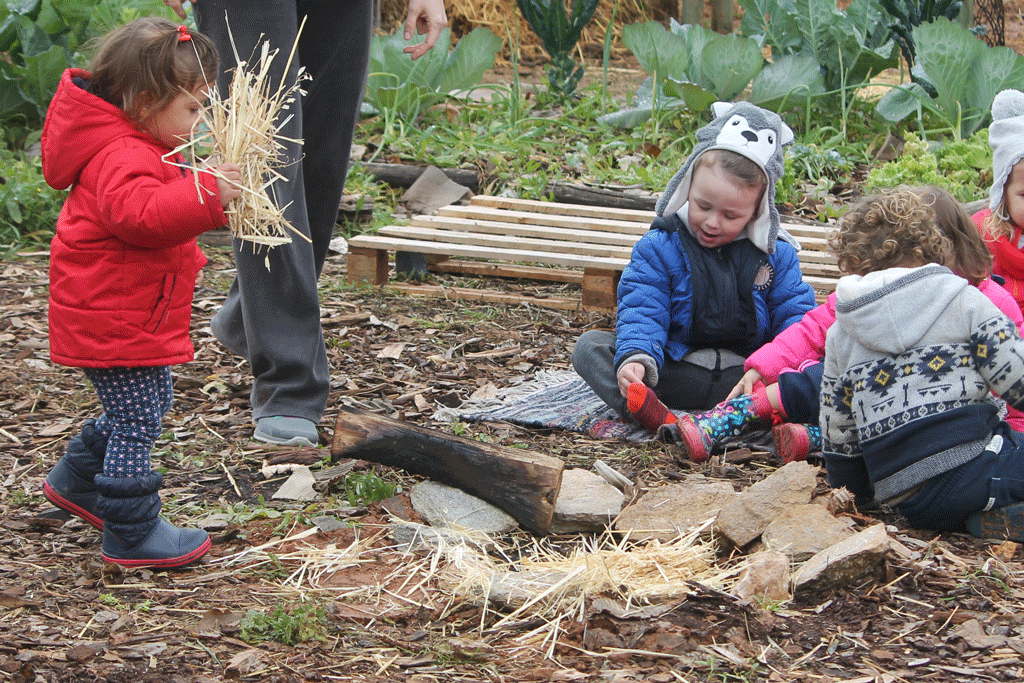

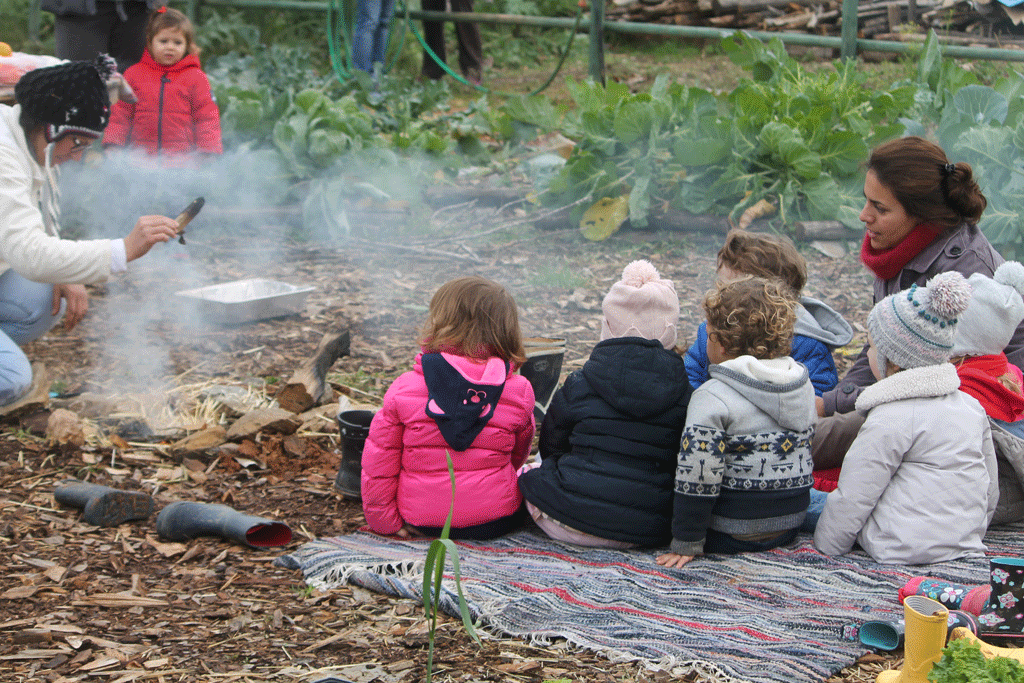
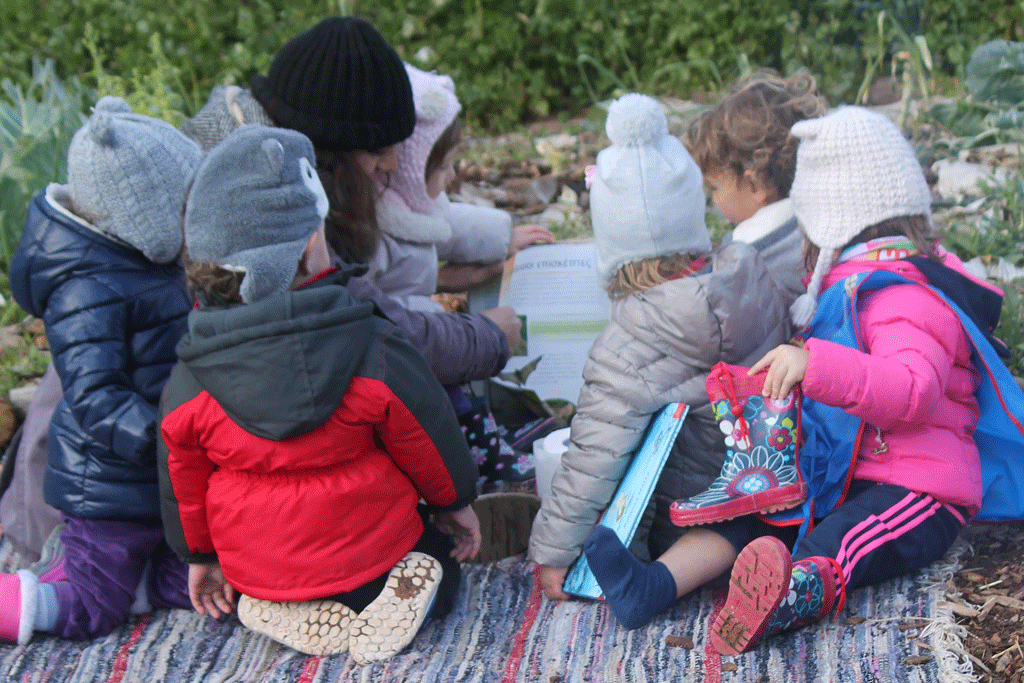

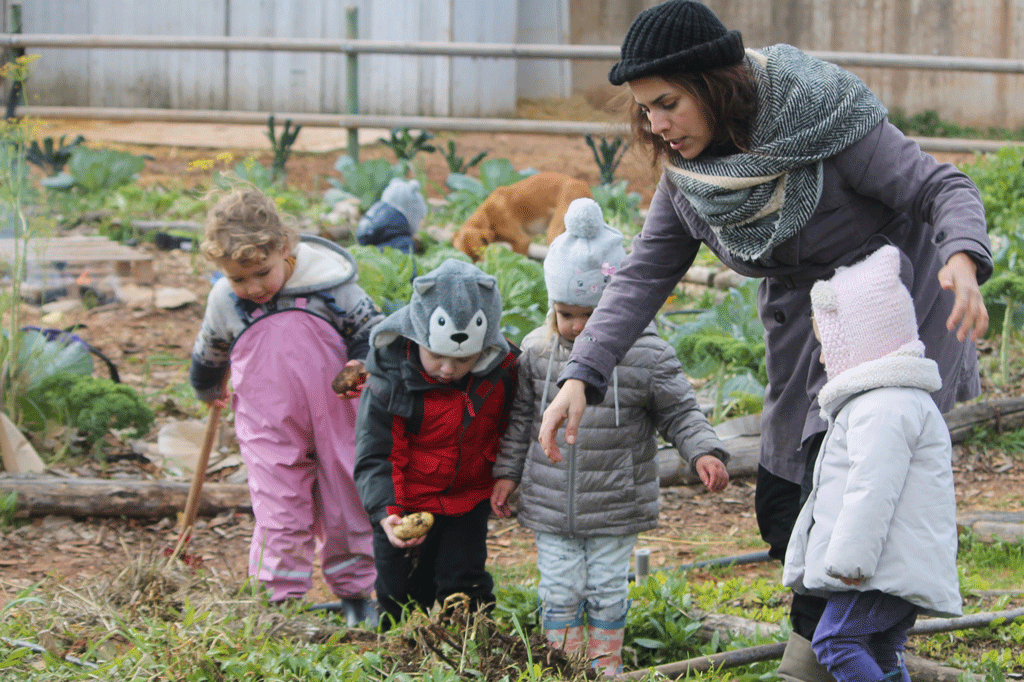
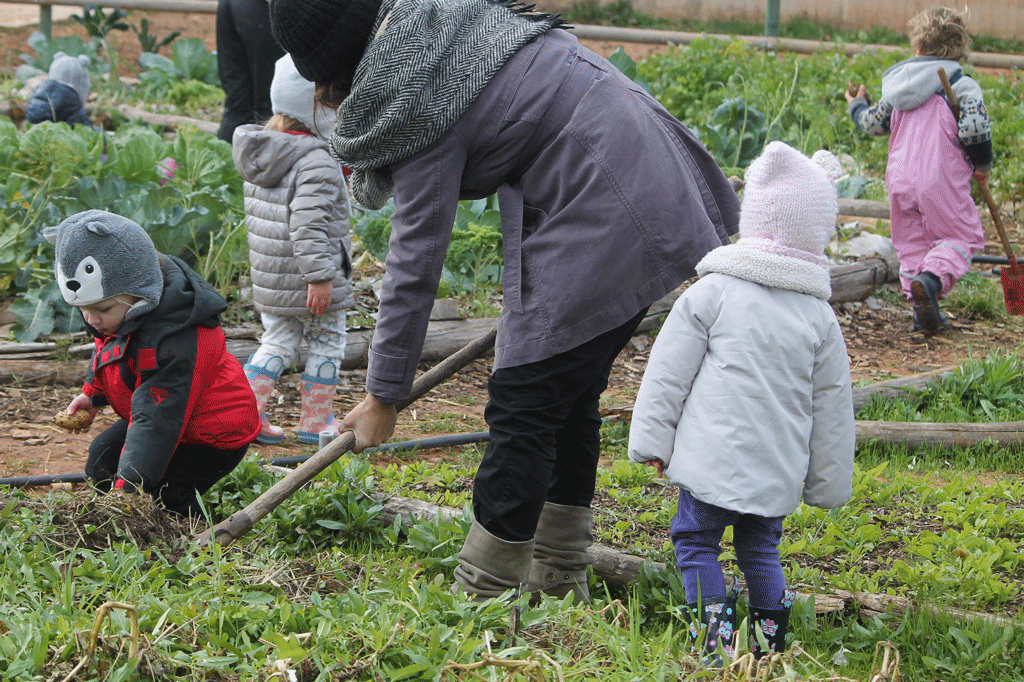
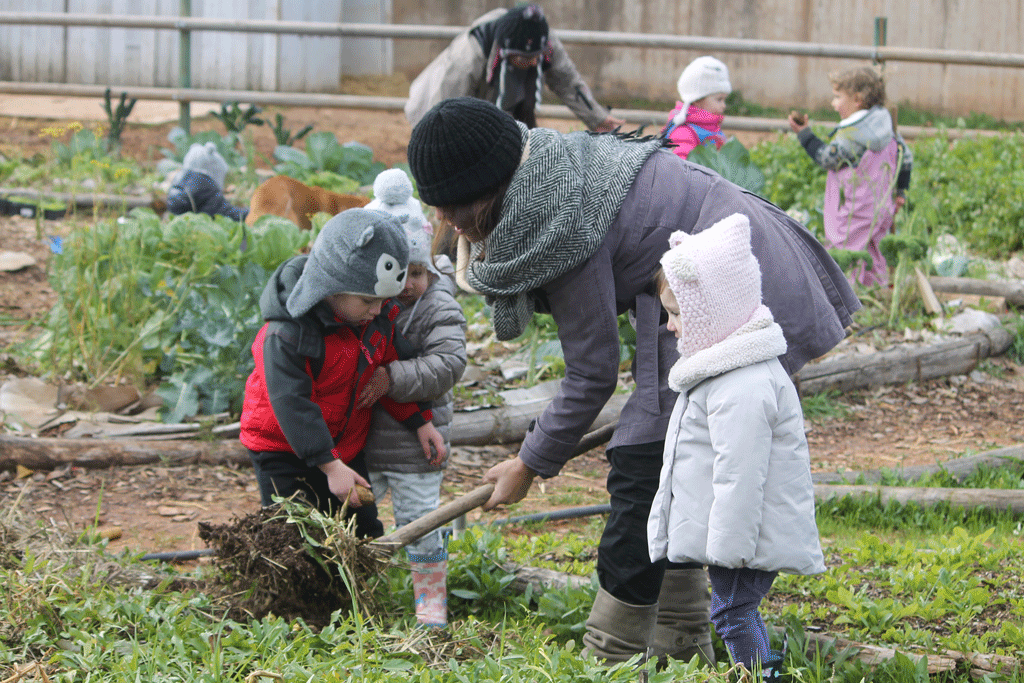




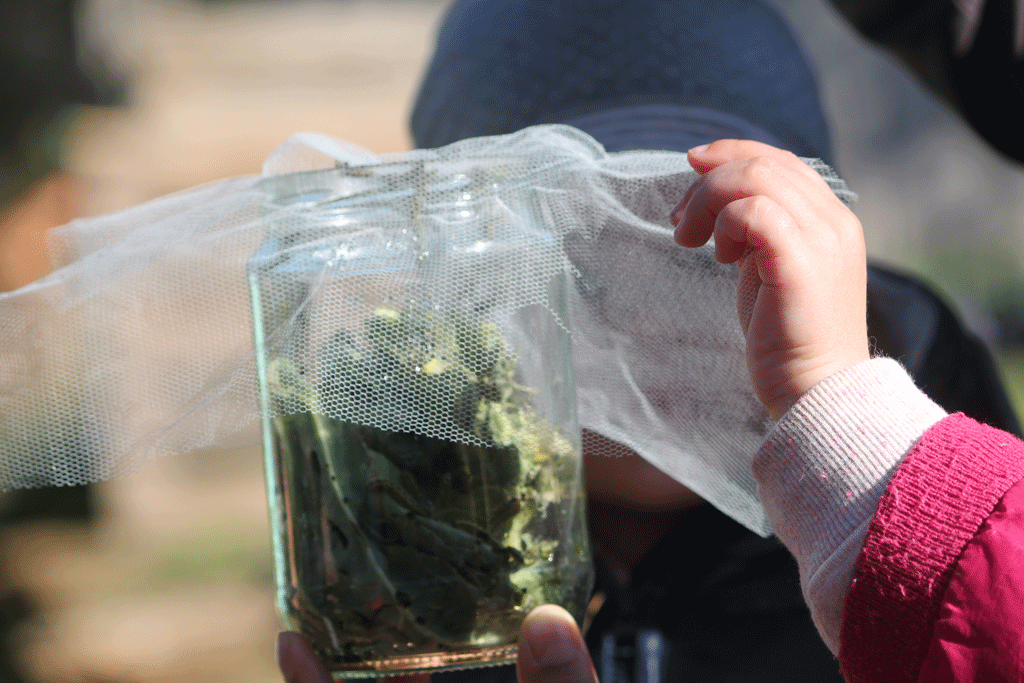


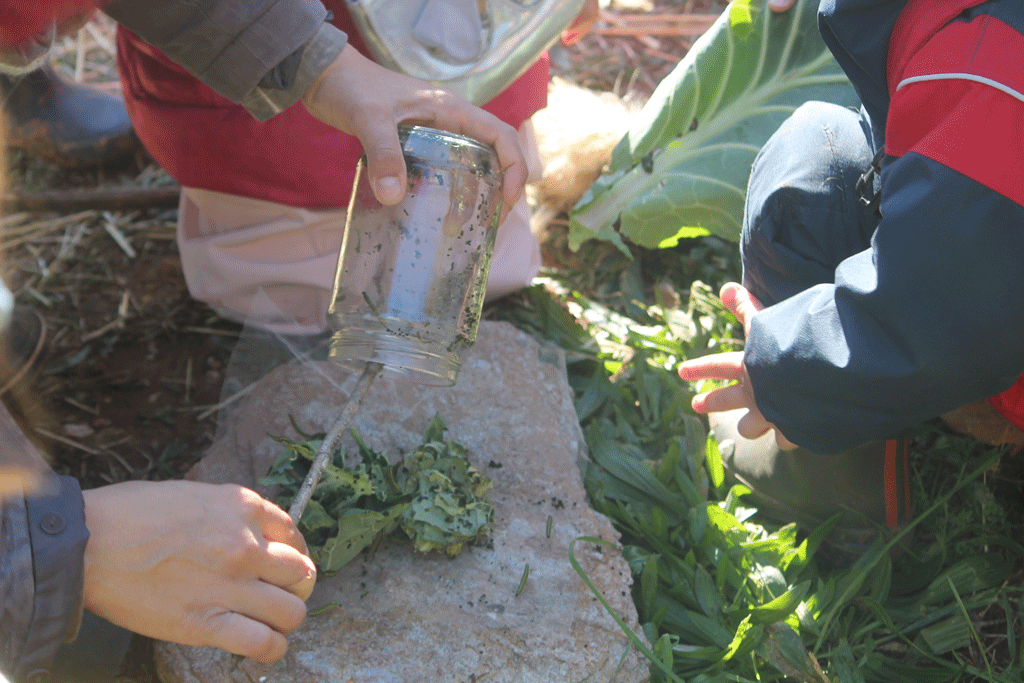
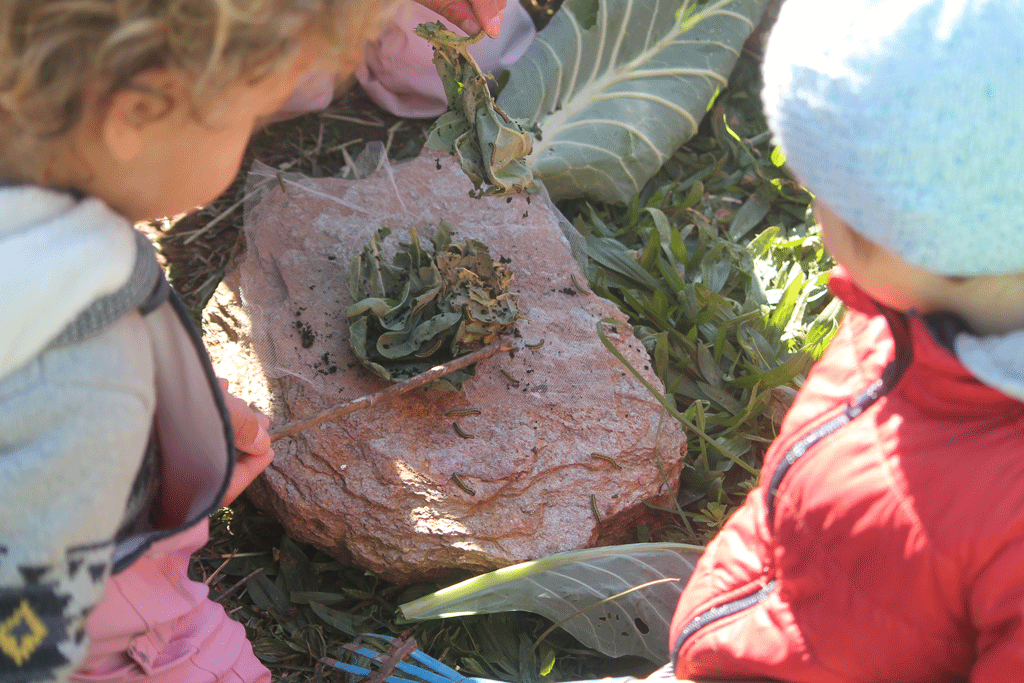
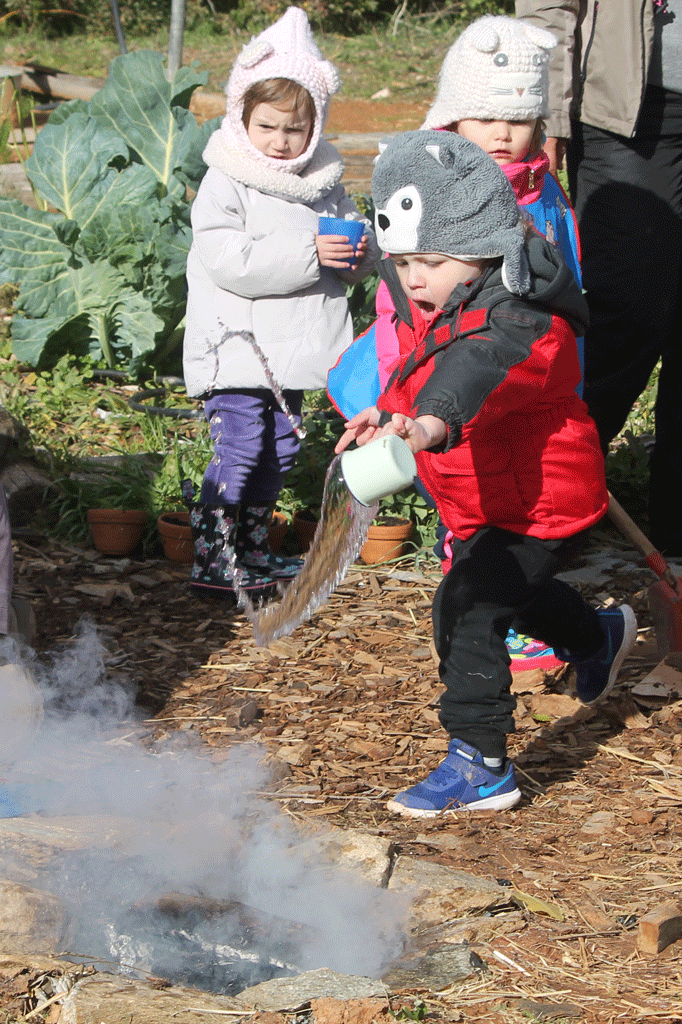
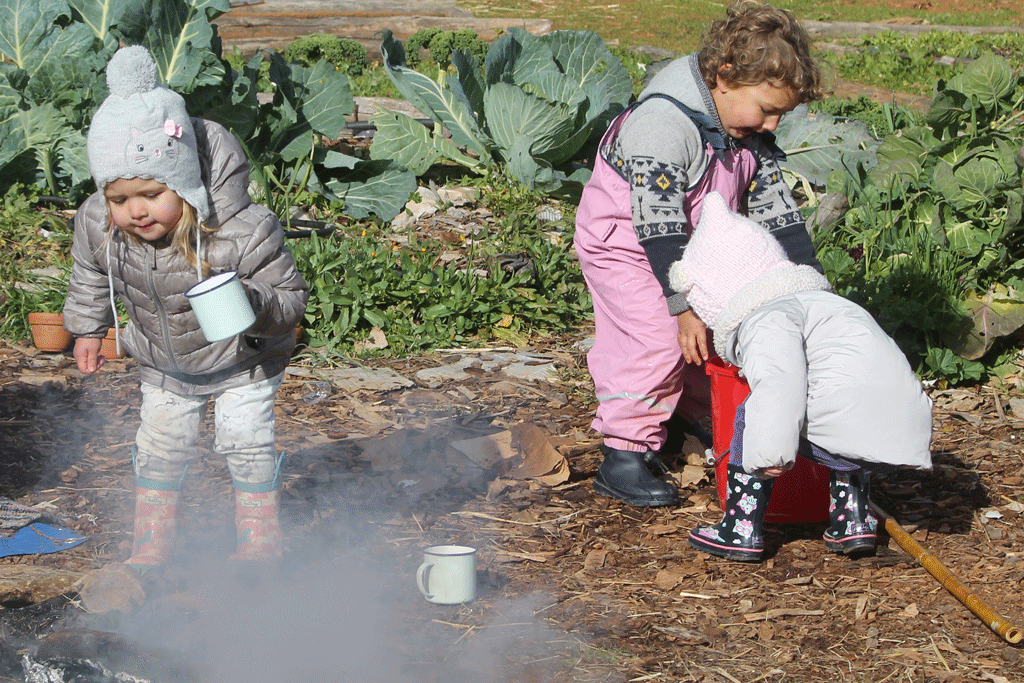
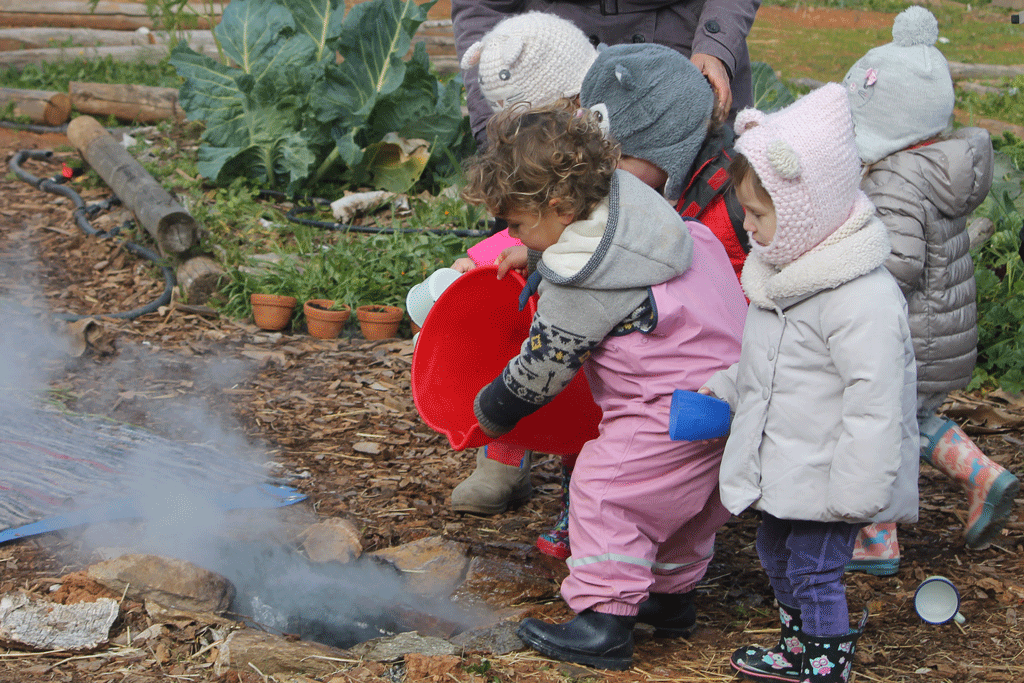


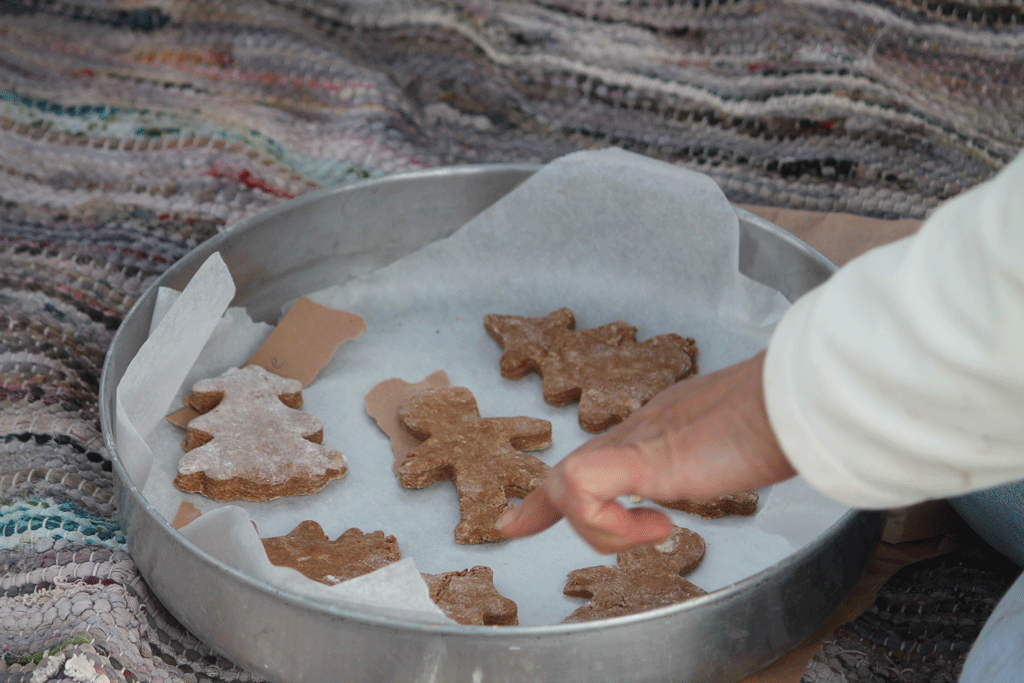
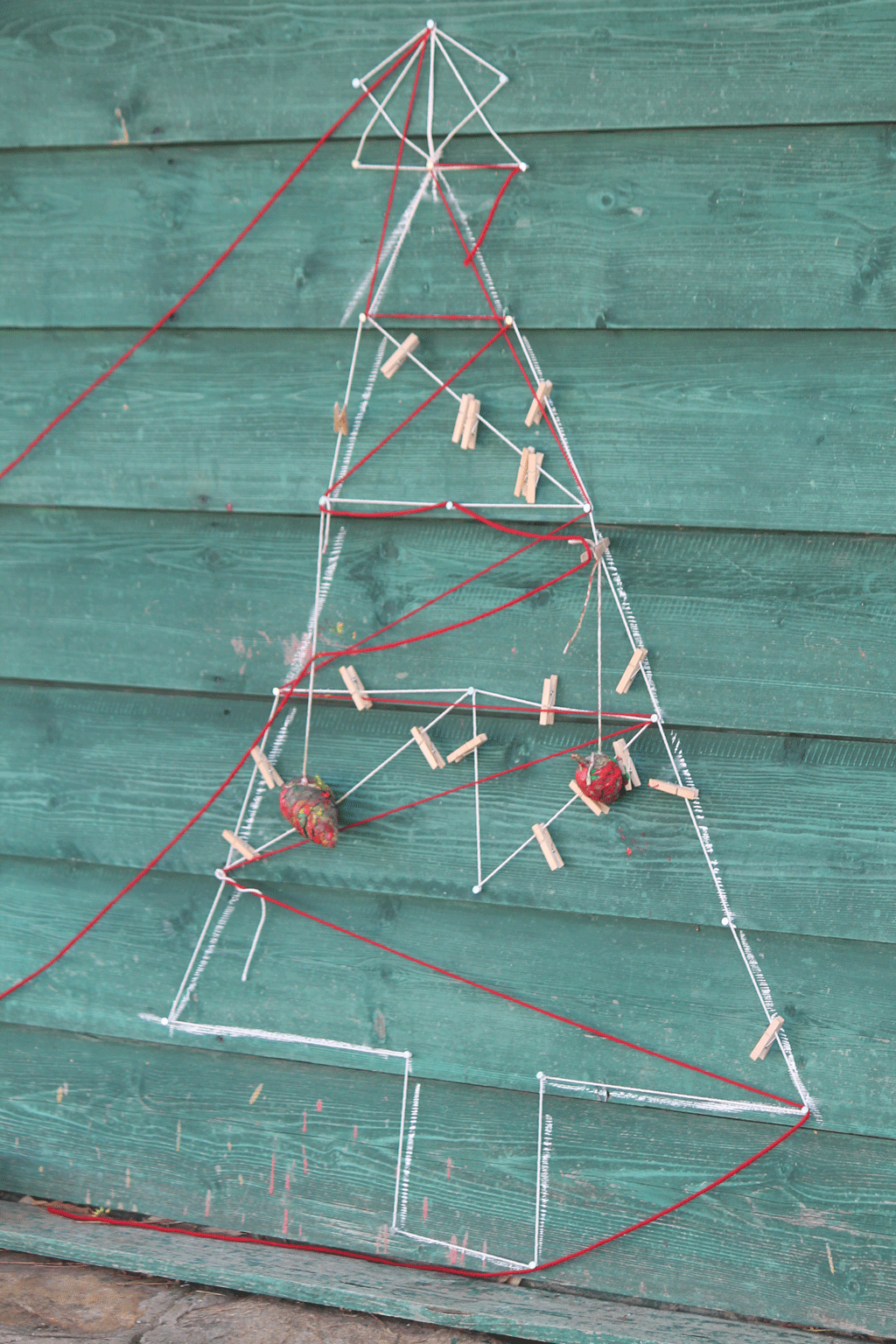
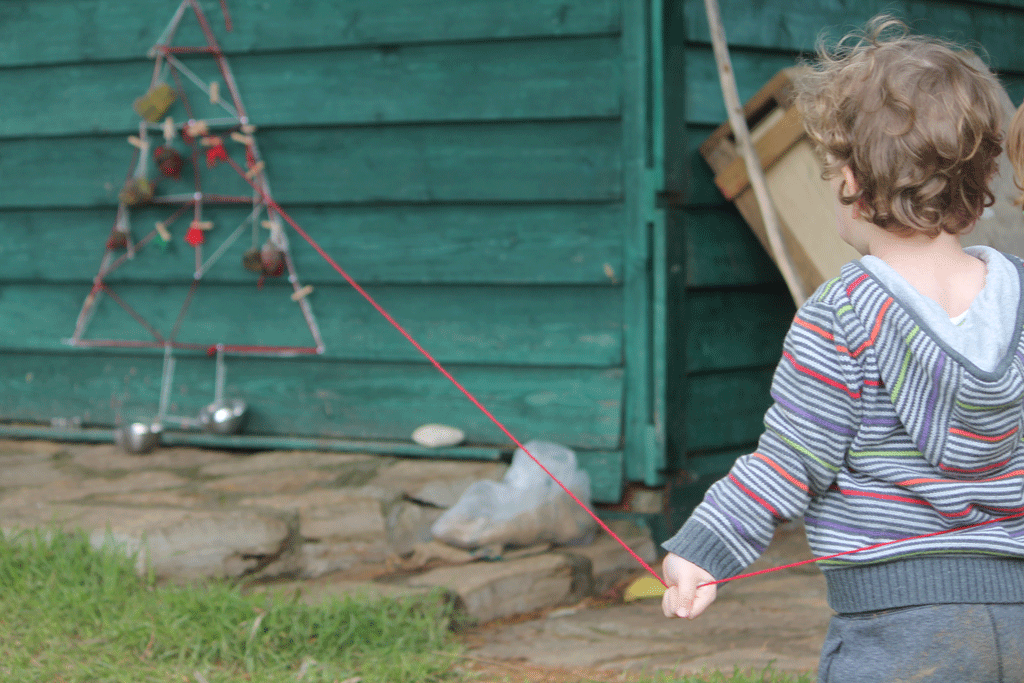
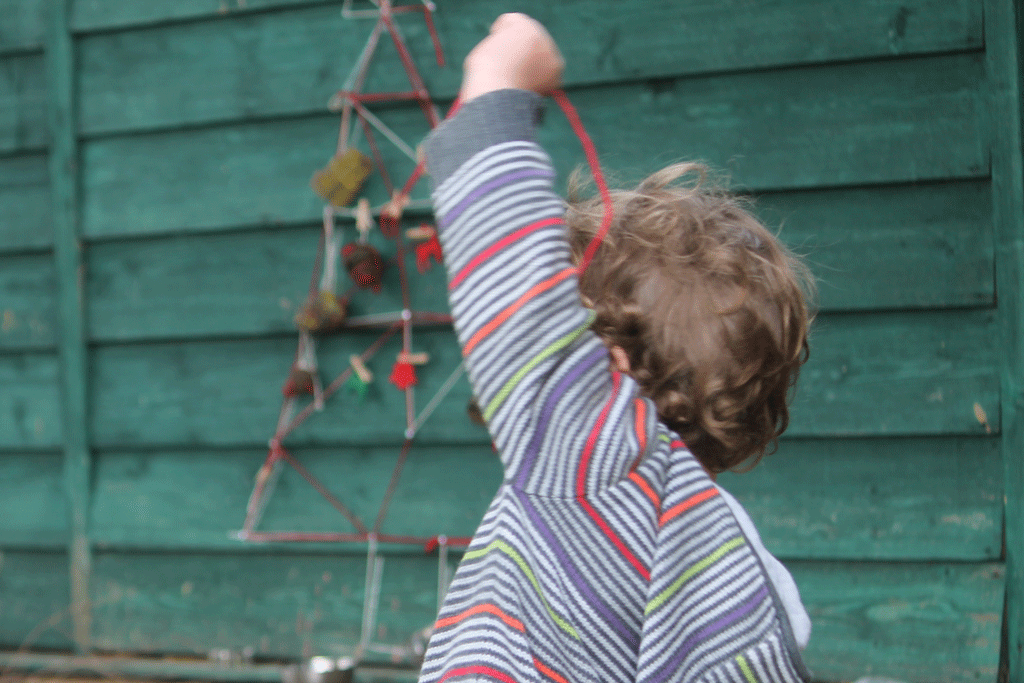
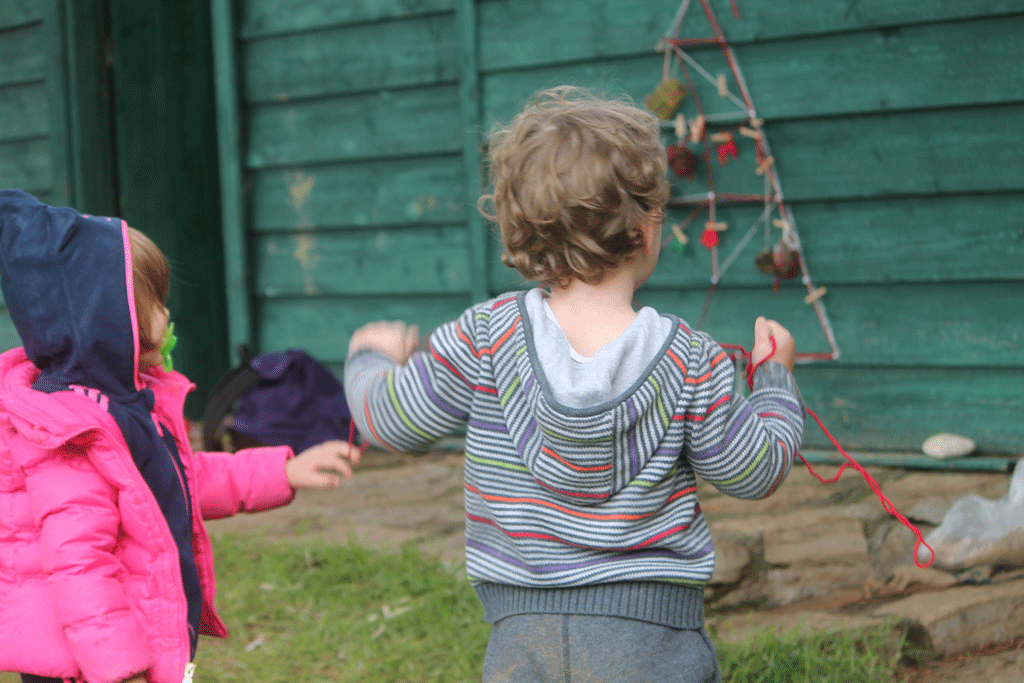
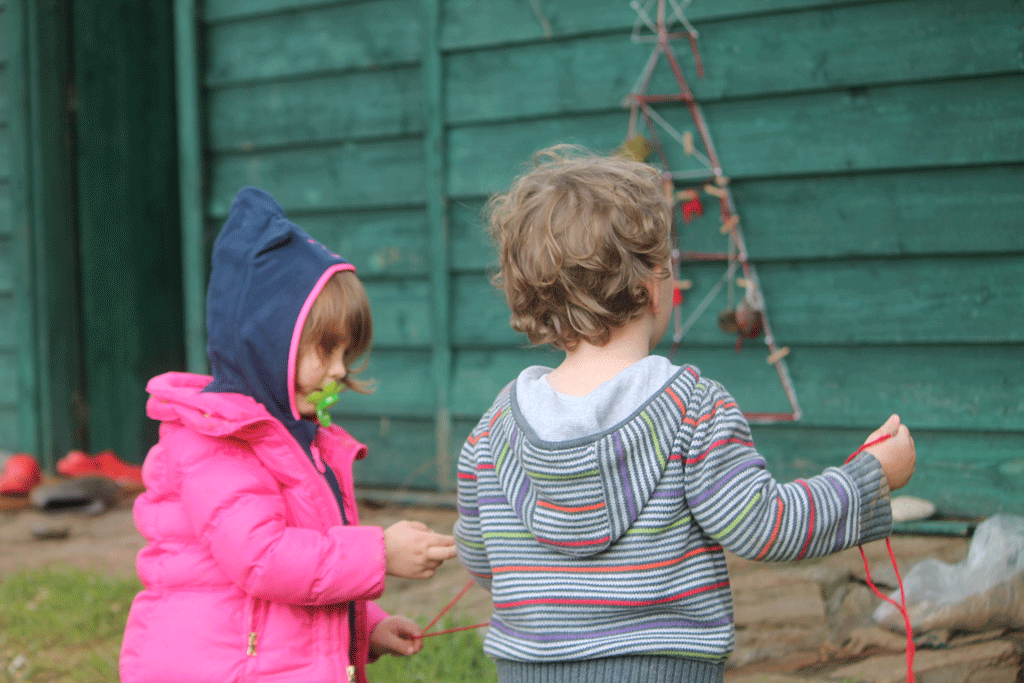
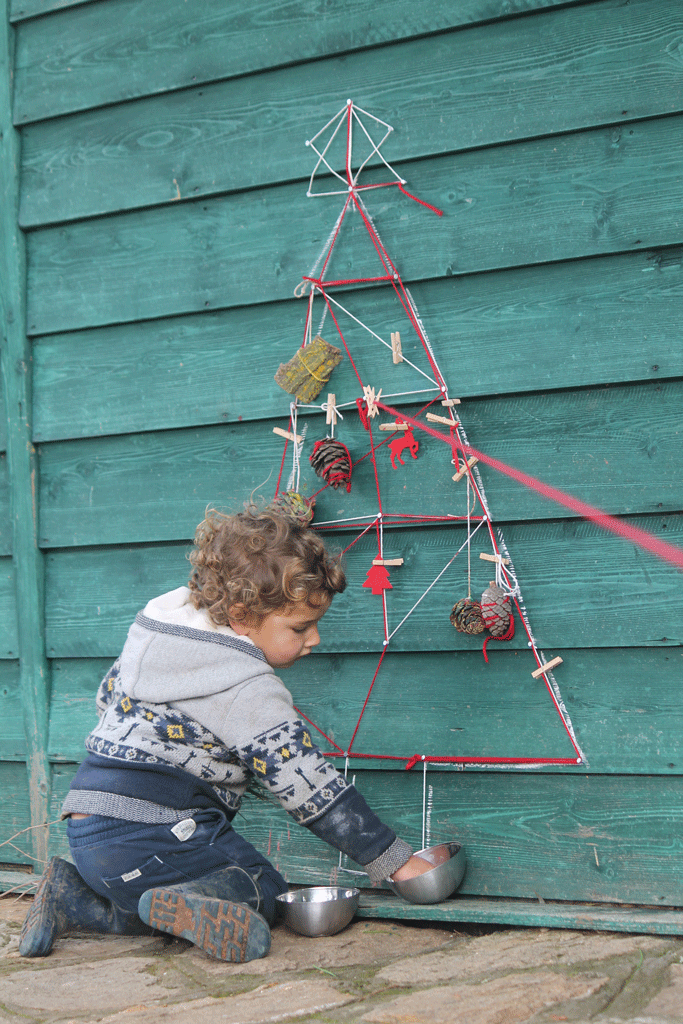
Comments